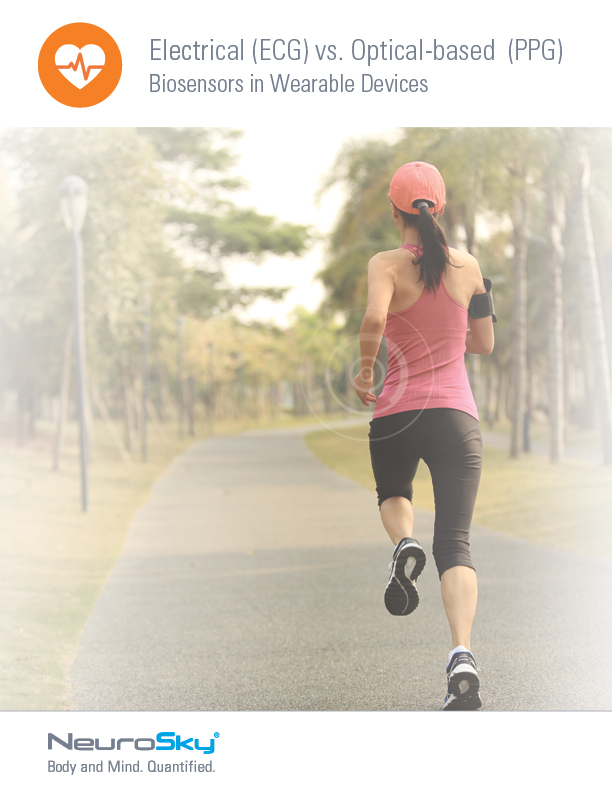Mobile and wearable devices have quickly become essential tools for consumers interested in tracking their health and fitness. As this technology becomes more accessible, manufactures will need to find ways to stand out in an increasingly crowded marketplace. As such, it’s critical to consider the different options available for biosensor technology that can enable wearable devices. This post will cover some of the top considerations that mHealth device manufactures need to explore when developing a new product and bringing it to market.
The Difference Between ECG & PPG
When it comes to tracking heart rate metrics with wearable and mobile devices, there are two primary technologies at your disposal: ECG (electrocardiography), which measures biopotential generated by electrical signals that control the chambers of the heart through expansion and contraction, and PPG (photoplethysmography), which senses the rate of blood flow as controlled by the heart’s pumping action through light-based technology.
Which is Right for Your Device?
There are a number of factors to consider when you’re deciding which technological route to take with your device:
Metrics – ECG biosensors are capable of delivering the widest range of heart health metrics because they are able to capture more comprehensive signals of overall heart performance, including both Heart Rate (HR) and Heart Rate Variability (HRV). In contrast, PPG sensors are capable only of measuring HR.
Specs – Manufacturers must also consider factors such as size, power consumption, and ease of integration when selecting the technology to enable their device. NeuroSky’s BMD101 ECG-based solution requires only 2.5mW of operating power and features PCB footprint of 3mm x 3mm—the smallest in the world—with no additional components required. Perhaps best of all, the BDM101 includes a software development kit (SDK) for Android and iOS devices, which provide options for easy app development and integration.
Accuracy – ECG-based solutions track electrical signals produced directly by heart activity, meaning they obtain data that is far more accurate than their PPG-based counterparts. In the case of HRV measurements, ECG-based solutions can track peak intervals with millisecond level accuracy.
Settling Times – Because of the technology behind ECG-solutions, they also offer much shorter settling times than PPG-based solutions. This means meaningful data can be obtained shortly after start-up, where as with a PPG, there are many calculations that need to be worked through before any data of consequence can be properly obtained.
Cost – It was not long ago that ECG-based solutions were almost exclusively found in high-end equipment in controlled environments. When this technology made the initial jump to the consumer market, it came with a high price tag. Fortunately for device manufacturers, the price of ECG sensors has decreased significantly. While PPG-based alternatives present the lowest total cost, they lack many of the benefits associated with ECG technology.
For more important factors for mHealth device manufactures to consider when selecting a biosensor technology to enable the next big product, download the free Comparison Chart: Electrical (ECG) vs Optical (PPG) Biosensors in Wearable Devices.



